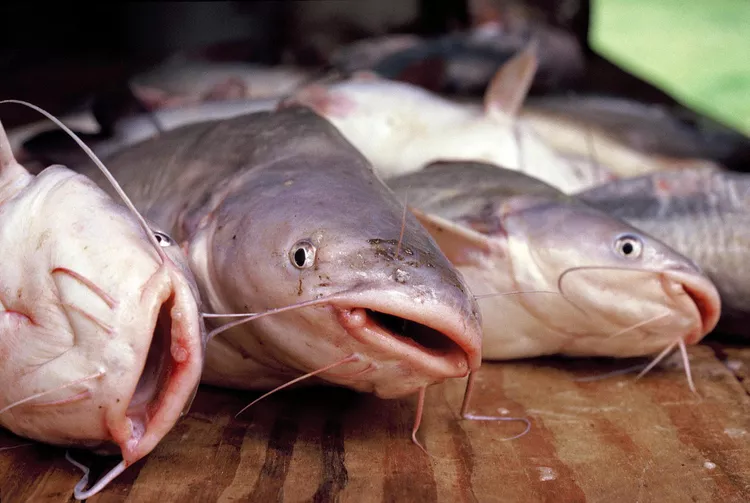Summary
Catfish can be found in a variety of lakes and rivers across the United States. Depending on the specific body of water, you might encounter large specimens as well as numerous smaller ones. Common types include channel, blue, and flathead catfish, along with their smaller cousins, the bullheads. It is interesting to note that the world record brown and black bullheads originated from lakes.
These species are enjoyable to catch and are considered good to eat. Typically, smaller fish are preferred for cooking since larger ones, apart from flatheads, tend to become tough. Generally, catfish are bottom feeders, often residing in deeper waters, but they do venture into shallower areas to feed—especially during nighttime.
Creek Channels, Depth, and Temperature
In larger lakes, specifically those that serve as impoundments, catfish, particularly the larger varieties, tend to inhabit old creek and river channels in deeper waters. They will often move into shallower depths for feeding, primarily at night. The flats that are adjacent to these channels offer exceptional fishing opportunities. If you follow a creek channel across a flat towards the back of a cove, you are likely to find catfish along its path. Catfish can adapt to various bottom types, including rocks and mud, although they generally prefer hard bottoms like clay or gravel.
The depth of water is also crucial for successful catfishing. During both winter and summer seasons, catfish will stay in the deepest areas that have sufficient oxygen levels, seeking out temperatures around the mid-70s Fahrenheit. In the southern regions, this often translates to very deep waters. During the spring spawning season, they tend to migrate into shallower waters with hard bottoms. As the fall season progresses and the water cools down to the upper 70s, they will move back to deeper areas as temperatures drop further. Although catfish can be caught in cold water—even during ice fishing—this occurrence is relatively uncommon. Typically, these fish display higher activity levels in warm waters.
Bait Fishing for Catfish
Catfish are omnivorous and will consume almost anything they can fit in their mouths. Popular natural baits include liver, live minnows, earthworms, crickets, and mealworms. Additionally, there is a broad range of prepared “stink” baits available in the market. These paste- and dough-like baits can be molded around hooks and are particularly effective for bottom fishing.
Interestingly, catfish have been caught using unconventional baits such as hot dog pieces or even soap. They are also tempted by a variety of artificial baits, including plastic worms, crankbaits, and spinnerbaits, though these are generally less productive compared to natural or prepared baits.
The size of the bait should correspond to the size of the fish you aim to catch. For smaller, edible-sized channel cats, earthworms or small minnows work well. In contrast, for larger flatheads, using a 6-inch or bigger bream or shad is most effective. Always fish with your bait on the bottom. In lakes, pre-baiting a hole—essentially a form of chumming—can help draw catfish into a concentrated area, significantly enhancing your chances of success.
Tackle to Use
It is essential to select your rod, reel, and line based on the size of the catfish you expect to encounter. Smaller catfish can be caught more effectively with lighter spinning or baitcasting rods, which provide enjoyable sport. However, for landing truly large catfish, heavy-action rods, reels equipped with reliable drag systems, and strong lines are necessary. Many anglers targeting catfish weighing 50 pounds or more opt for light saltwater gear.
For catching smaller catfish, a 6- to 7-foot medium-action spinning rod combined with a medium-duty reel featuring a robust drag will be sufficient for most scenarios. Spooling the reel with 10-pound nylon monofilament line, or, alternatively, a heavier braided line with a small diameter, will enable you to catch fish weighing between 1 to 10 pounds. If your reel drag is dependable and you handle the fish correctly, you may even land larger catfish with this setup.





